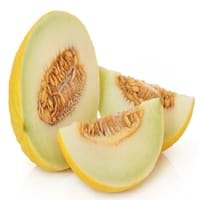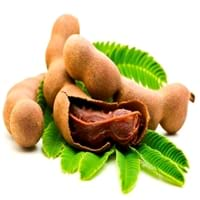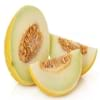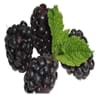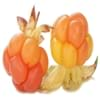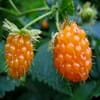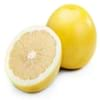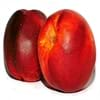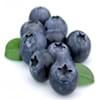Health Benefits
Body hydration, Cancer prevention, Gout treatment, Heart care, Treatment of skin Diseases
Boosts immune system, Boosts respiratory health, Cancer prevention, Digestive aid, Piles treatment
General Benefits
Body hydration, Controls blood pressure, Digestive aid, Eye care, Helps in weight loss, Improves eye vision, Maintains healthy cholesterol level, Strengthens bones
Beneficial in improving nerve function, Protects against parasites and worms, Relieves pain
Skin Benefits
Anti-aging benefits, Brightens and lightens complexion, Hydrates skin, Reduces wrinkles, Treatment of dark spots
Anti-aging benefits, Brightens and lightens complexion, Exfoliates skin, Hydrates skin, Treatment of dark spots
Hair Benefits
Prevents hair loss, Promotes longer and healthier hair, Protects hair
Prevents hair loss
Allergy Symptoms
Abdominal cramps, Breathing difficulty, Coughing, Diarrhea, Hives, Hoarseness, Itching in eyes, Itching of mouth, Itching sensation in throat, Nasal congestion, Nausea, Skin rash, Wheezing
Abdominal pains, Breathing difficulty, Dizziness, Eczema, Fainting, Hives, Itching, Nasal congestion, Swelling of face, Tingling sensation in mouth, Vomiting
Side Effects
Allergic reaction
Decrease in blood sugar levels, Induces acid reflux, Allergic reaction, Tooth decay, May form gallstones
Best Time to Eat
As a snack in the late afternoon, Don't consume at night and before bed, Eat the fresh ones, avoid mixing with any other foods, don't eat after meal., Morning time (before lunch)
Along with meal, As a snack in the late afternoon, Don't consume at night and before bed, Strictly avoid empty stomach
Vitamin B5 (Pantothenic Acid)
Vitamin C (Ascorbic Acid)
Vitamin K (Phyllochinone)
Phytosterol
Not Available
Calories in Fresh Fruit with Peel
Not Available
Not Available
Calories in Fresh Fruit without Peel
Calories in Canned Form
Not Available
Not Available
Season
All seasons
Spring, Summer
Varieties
Green Flesh, Yellow Rind and Orange Flesh
PKM 1, Urigam, Hasanur, Tumkur prathisthan, DTS 1 and Yogeshwari
Color
Green, Yellow
Brown, Reddish-brown
Inside Color
Light Green
Brown
Shape
Round
Curving Cylinder
Grows on
Not Available
Trees
Soil Type
Sandy loam, Well-drained
Loam, Sandy, Sandy loam, Well-drained
Climatic Conditions
Warm
Humid to dry, Rainfall, Warm to hot climate
Facts about
- The average weight of honeydew melon is 6 pounds.
- 90% of a honeydew is water.
- In middle east countries, dried and roasted honeydew seeds are consumed as snacks.
- Honeydew melons can be 15-22 mm long.
- Tamarind is used to prevent body odor.
- African children use the tamarind seeds in games.
- No cases of tamarind toxicity or allergy reported till date.
Other Countries
Brazil, Egypt, India, Iran, Mexico, Morocco, Spain, Turkey, United States of America
Africa, Australia, Brazil, China, Mexico, Nigeria, Sudan, Taiwan
Top Importer
Not Available
United States of America
Top Exporter
Not Available
Thailand
Botanical Name
Cucumis melo
Tamarindus indica
Synonym
Not Available
Tamarindo, tamarindus
Subkingdom
Tracheobionta
Tracheobionta
Division
Magnoliophyta
Magnoliophyta
Class
Magnoliopsida
Liliopsida
Subclass
Dillenhidae
Rosidae
Order
Cucurbitales
Fabales
Family
Cucurbitaceae
Fabaceae
Species
C. melo
Tamarindus indica
Generic Group
Gourd
Tamarind Sub
Difference Between Honeydew and Tamarind
We might think that Honeydew and Tamarind are similar with respect to nutritional value and health benefits. But the nutrient content of both fruits is different. Honeydew and Tamarind Facts such as their taste, shape, color, and size are also distinct. The difference between Honeydew and Tamarind is explained here.
The amount of calories in 100 gm of fresh Honeydew and Tamarind with peel is Not Available and Not Available and the amount of calories without peel is 36.00 kcal and 239.00 kcal respectively. Thus, Honeydew and Tamarind belong to Low Calorie Fruits and High Calorie Fruits category.These fruits might or might not differ with respect to their scientific classification. The order of Honeydew and Tamarind is Cucurbitales and Fabales respectively. Honeydew belongs to Cucurbitaceae family and Tamarind belongs to Fabaceae family. Honeydew belongs to Cucumis genus of C. melo species and Tamarind belongs to Tamarindus genus of Tamarindus indica species. Beings plants, both fruits belong to Plantae Kingdom.
